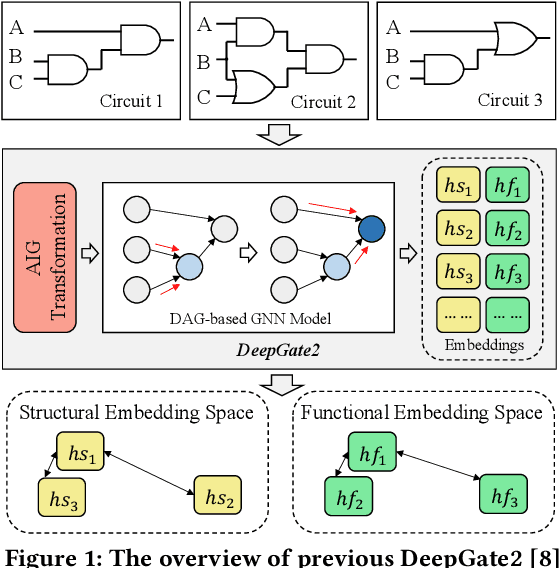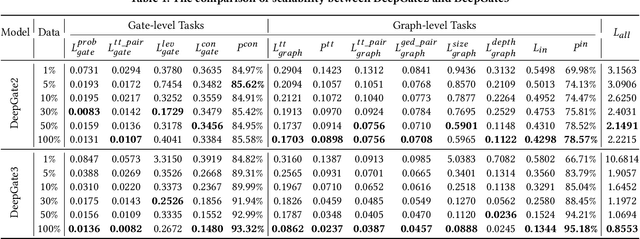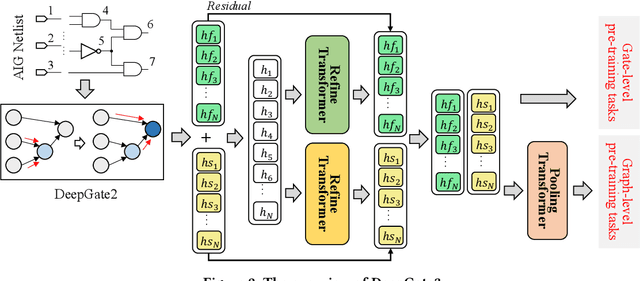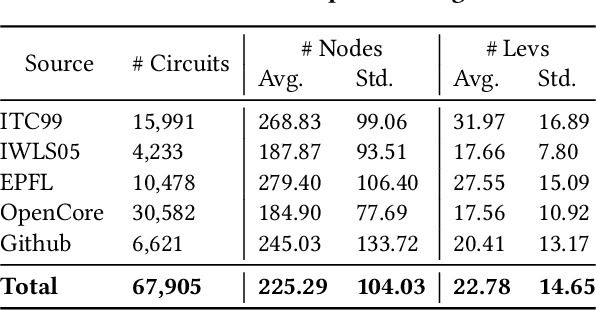Ziyang Zheng
HiPART: Hierarchical Pose AutoRegressive Transformer for Occluded 3D Human Pose Estimation
Mar 30, 2025Abstract:Existing 2D-to-3D human pose estimation (HPE) methods struggle with the occlusion issue by enriching information like temporal and visual cues in the lifting stage. In this paper, we argue that these methods ignore the limitation of the sparse skeleton 2D input representation, which fundamentally restricts the 2D-to-3D lifting and worsens the occlusion issue. To address these, we propose a novel two-stage generative densification method, named Hierarchical Pose AutoRegressive Transformer (HiPART), to generate hierarchical 2D dense poses from the original sparse 2D pose. Specifically, we first develop a multi-scale skeleton tokenization module to quantize the highly dense 2D pose into hierarchical tokens and propose a Skeleton-aware Alignment to strengthen token connections. We then develop a Hierarchical AutoRegressive Modeling scheme for hierarchical 2D pose generation. With generated hierarchical poses as inputs for 2D-to-3D lifting, the proposed method shows strong robustness in occluded scenarios and achieves state-of-the-art performance on the single-frame-based 3D HPE. Moreover, it outperforms numerous multi-frame methods while reducing parameter and computational complexity and can also complement them to further enhance performance and robustness.
Point Cloud Denoising With Fine-Granularity Dynamic Graph Convolutional Networks
Nov 21, 2024Abstract:Due to limitations in acquisition equipment, noise perturbations often corrupt 3-D point clouds, hindering down-stream tasks such as surface reconstruction, rendering, and further processing. Existing 3-D point cloud denoising methods typically fail to reliably fit the underlying continuous surface, resulting in a degradation of reconstruction performance. This paper introduces fine-granularity dynamic graph convolutional networks called GD-GCN, a novel approach to denoising in 3-D point clouds. The GD-GCN employs micro-step temporal graph convolution (MST-GConv) to perform feature learning in a gradual manner. Compared with the conventional GCN, which commonly uses discrete integer-step graph convolution, this modification introduces a more adaptable and nuanced approach to feature learning within graph convolution networks. It more accurately depicts the process of fitting the point cloud with noise to the underlying surface by and the learning process for MST-GConv acts like a changing system and is managed through a type of neural network known as neural Partial Differential Equations (PDEs). This means it can adapt and improve over time. GD-GCN approximates the Riemannian metric, calculating distances between points along a low-dimensional manifold. This capability allows it to understand the local geometric structure and effectively capture diverse relationships between points from different geometric regions through geometric graph construction based on Riemannian distances. Additionally, GD-GCN incorporates robust graph spectral filters based on the Bernstein polynomial approximation, which modulate eigenvalues for complex and arbitrary spectral responses, providing theoretical guarantees for BIBO stability. Symmetric channel mixing matrices further enhance filter flexibility by enabling channel-level scaling and shifting in the spectral domain.
Point Cloud Resampling with Learnable Heat Diffusion
Nov 21, 2024Abstract:Generative diffusion models have shown empirical successes in point cloud resampling, generating a denser and more uniform distribution of points from sparse or noisy 3D point clouds by progressively refining noise into structure. However, existing diffusion models employ manually predefined schemes, which often fail to recover the underlying point cloud structure due to the rigid and disruptive nature of the geometric degradation. To address this issue, we propose a novel learnable heat diffusion framework for point cloud resampling, which directly parameterizes the marginal distribution for the forward process by learning the adaptive heat diffusion schedules and local filtering scales of the time-varying heat kernel, and consequently, generates an adaptive conditional prior for the reverse process. Unlike previous diffusion models with a fixed prior, the adaptive conditional prior selectively preserves geometric features of the point cloud by minimizing a refined variational lower bound, guiding the points to evolve towards the underlying surface during the reverse process. Extensive experimental results demonstrate that the proposed point cloud resampling achieves state-of-the-art performance in representative reconstruction tasks including point cloud denoising and upsampling.
DeepSeq2: Enhanced Sequential Circuit Learning with Disentangled Representations
Nov 01, 2024Abstract:Circuit representation learning is increasingly pivotal in Electronic Design Automation (EDA), serving various downstream tasks with enhanced model efficiency and accuracy. One notable work, DeepSeq, has pioneered sequential circuit learning by encoding temporal correlations. However, it suffers from significant limitations including prolonged execution times and architectural inefficiencies. To address these issues, we introduce DeepSeq2, a novel framework that enhances the learning of sequential circuits, by innovatively mapping it into three distinct embedding spaces-structure, function, and sequential behavior-allowing for a more nuanced representation that captures the inherent complexities of circuit dynamics. By employing an efficient Directed Acyclic Graph Neural Network (DAG-GNN) that circumvents the recursive propagation used in DeepSeq, DeepSeq2 significantly reduces execution times and improves model scalability. Moreover, DeepSeq2 incorporates a unique supervision mechanism that captures transitioning behaviors within circuits more effectively. DeepSeq2 sets a new benchmark in sequential circuit representation learning, outperforming prior works in power estimation and reliability analysis.
An Actor-Critic Approach to Boosting Text-to-SQL Large Language Model
Oct 28, 2024Abstract:Text-To-SQL (T2S) conversion based on large language models (LLMs) has found a wide range of applications, by leveraging the capabilities of LLMs in interpreting the query intent expressed in natural language. Existing research focuses on suitable representations for data schema and/or questions, task-specific instructions and representative examples, and complicated inference pipelines. All these methods are empirical and task specific, without a theoretical bound on performance. In this paper, we propose a simple, general, and performance guaranteed T2S enhancement approach called Actor-Critic (AC). Specifically, we design two roles using the same LLM: an Actor to produce SQL queries and a Critic to evaluate the produced SQL. If the Critic believes the produced SQL is wrong, it notifies the Actor to reproduce the SQL and perform evaluation again. By this simple iterative process, expected performance can be derived in theory. We conducted extensive experiments on the Spider and related datasets with eleven LLMs, and demonstrated that the Actor-Critic method consistently improves the performance of T2S, thus serving as a general enhancement approach for T2S conversion.
DeepGate3: Towards Scalable Circuit Representation Learning
Jul 15, 2024



Abstract:Circuit representation learning has shown promising results in advancing the field of Electronic Design Automation (EDA). Existing models, such as DeepGate Family, primarily utilize Graph Neural Networks (GNNs) to encode circuit netlists into gate-level embeddings. However, the scalability of GNN-based models is fundamentally constrained by architectural limitations, impacting their ability to generalize across diverse and complex circuit designs. To address these challenges, we introduce DeepGate3, an enhanced architecture that integrates Transformer modules following the initial GNN processing. This novel architecture not only retains the robust gate-level representation capabilities of its predecessor, DeepGate2, but also enhances them with the ability to model subcircuits through a novel pooling transformer mechanism. DeepGate3 is further refined with multiple innovative supervision tasks, significantly enhancing its learning process and enabling superior representation of both gate-level and subcircuit structures. Our experiments demonstrate marked improvements in scalability and generalizability over traditional GNN-based approaches, establishing a significant step forward in circuit representation learning technology.
Improving Diffusion Models for Inverse Problems Using Optimal Posterior Covariance
Feb 03, 2024



Abstract:Recent diffusion models provide a promising zero-shot solution to noisy linear inverse problems without retraining for specific inverse problems. In this paper, we propose the first unified interpretation for existing zero-shot methods from the perspective of approximating the conditional posterior mean for the reverse diffusion process of conditional sampling. We reveal that recent methods are equivalent to making isotropic Gaussian approximations to intractable posterior distributions over clean images given diffused noisy images, with the only difference in the handcrafted design of isotropic posterior covariances. Inspired by this finding, we propose a general plug-and-play posterior covariance optimization based on maximum likelihood estimation to improve recent methods. To achieve optimal posterior covariance without retraining, we provide general solutions based on two approaches specifically designed to leverage pre-trained models with and without reverse covariances. Experimental results demonstrate that the proposed methods significantly enhance the overall performance or robustness to hyperparameters of recent methods. Code is available at https://github.com/xypeng9903/k-diffusion-inverse-problems
Non-Cross Diffusion for Semantic Consistency
Nov 30, 2023Abstract:In diffusion models, deviations from a straight generative flow are a common issue, resulting in semantic inconsistencies and suboptimal generations. To address this challenge, we introduce `Non-Cross Diffusion', an innovative approach in generative modeling for learning ordinary differential equation (ODE) models. Our methodology strategically incorporates an ascending dimension of input to effectively connect points sampled from two distributions with uncrossed paths. This design is pivotal in ensuring enhanced semantic consistency throughout the inference process, which is especially critical for applications reliant on consistent generative flows, including various distillation methods and deterministic sampling, which are fundamental in image editing and interpolation tasks. Our empirical results demonstrate the effectiveness of Non-Cross Diffusion, showing a substantial reduction in semantic inconsistencies at different inference steps and a notable enhancement in the overall performance of diffusion models.
GL-Fusion: Global-Local Fusion Network for Multi-view Echocardiogram Video Segmentation
Sep 20, 2023



Abstract:Cardiac structure segmentation from echocardiogram videos plays a crucial role in diagnosing heart disease. The combination of multi-view echocardiogram data is essential to enhance the accuracy and robustness of automated methods. However, due to the visual disparity of the data, deriving cross-view context information remains a challenging task, and unsophisticated fusion strategies can even lower performance. In this study, we propose a novel Gobal-Local fusion (GL-Fusion) network to jointly utilize multi-view information globally and locally that improve the accuracy of echocardiogram analysis. Specifically, a Multi-view Global-based Fusion Module (MGFM) is proposed to extract global context information and to explore the cyclic relationship of different heartbeat cycles in an echocardiogram video. Additionally, a Multi-view Local-based Fusion Module (MLFM) is designed to extract correlations of cardiac structures from different views. Furthermore, we collect a multi-view echocardiogram video dataset (MvEVD) to evaluate our method. Our method achieves an 82.29% average dice score, which demonstrates a 7.83% improvement over the baseline method, and outperforms other existing state-of-the-art methods. To our knowledge, this is the first exploration of a multi-view method for echocardiogram video segmentation. Code available at: https://github.com/xmed-lab/GL-Fusion
GraphEcho: Graph-Driven Unsupervised Domain Adaptation for Echocardiogram Video Segmentation
Sep 20, 2023



Abstract:Echocardiogram video segmentation plays an important role in cardiac disease diagnosis. This paper studies the unsupervised domain adaption (UDA) for echocardiogram video segmentation, where the goal is to generalize the model trained on the source domain to other unlabelled target domains. Existing UDA segmentation methods are not suitable for this task because they do not model local information and the cyclical consistency of heartbeat. In this paper, we introduce a newly collected CardiacUDA dataset and a novel GraphEcho method for cardiac structure segmentation. Our GraphEcho comprises two innovative modules, the Spatial-wise Cross-domain Graph Matching (SCGM) and the Temporal Cycle Consistency (TCC) module, which utilize prior knowledge of echocardiogram videos, i.e., consistent cardiac structure across patients and centers and the heartbeat cyclical consistency, respectively. These two modules can better align global and local features from source and target domains, improving UDA segmentation results. Experimental results showed that our GraphEcho outperforms existing state-of-the-art UDA segmentation methods. Our collected dataset and code will be publicly released upon acceptance. This work will lay a new and solid cornerstone for cardiac structure segmentation from echocardiogram videos. Code and dataset are available at: https://github.com/xmed-lab/GraphEcho
 Add to Chrome
Add to Chrome Add to Firefox
Add to Firefox Add to Edge
Add to Edge